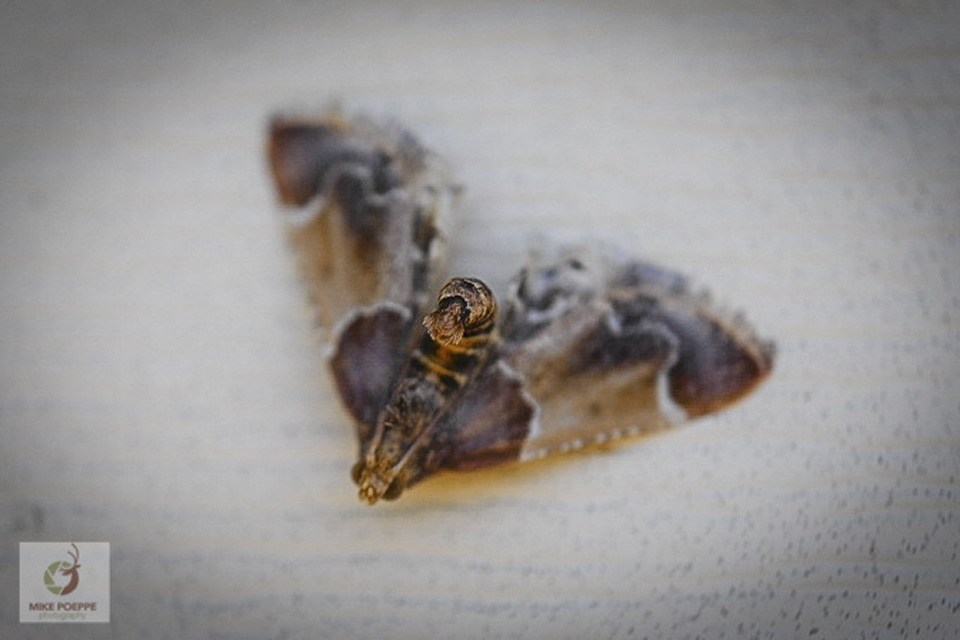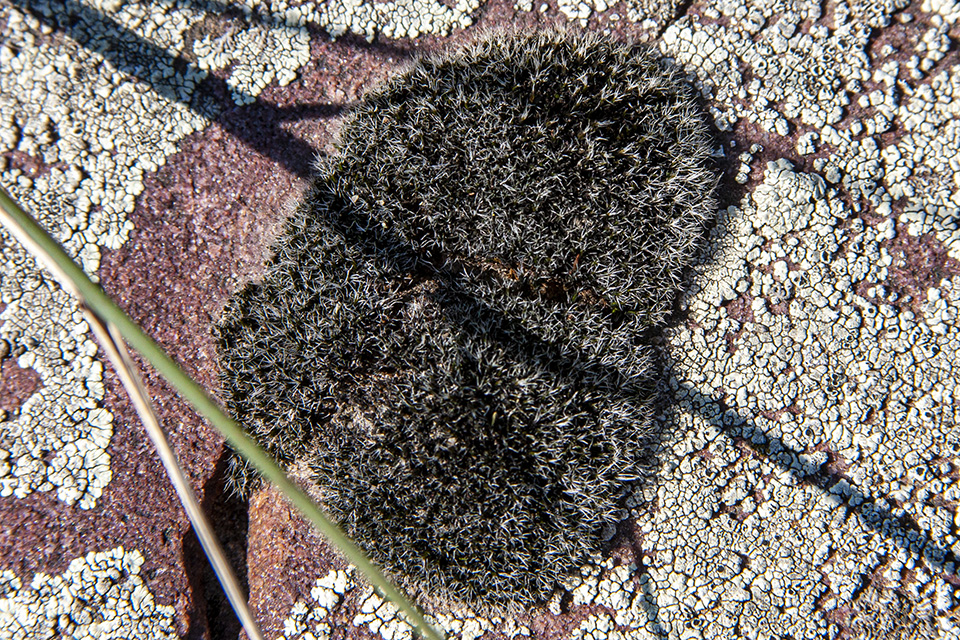
Meal moth (Pyralis farinalis) is a small, broad-winged, triangular moth. It is cosmopolitan, occurring around the world, but is most common in Europe and the United States. It is found anywhere grain is processed or stored, including warehouses, barns, and most home pantries. It is not the only moth common to home pantries, nor is it the most common. That distinction belongs to Indian meal moth. Other common pantry moths are Mediterranean flour moth, brown house moth, and white shouldered house moth.
Meal moth larva feed on cereals (plants in the grass family), grains (edible seeds of cereals), and vegetables, including potatoes. Adults do not feed and are short-lived. They mate as soon as possible after emerging, then die after nine or ten days. They rest with their wings spread wide, their abdomen raised at a right angle to the body, and their antennae folded back over the body.


